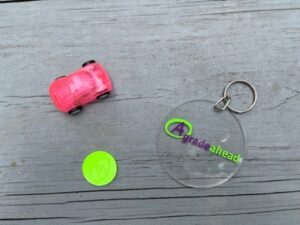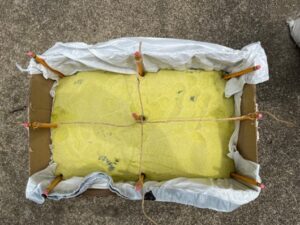As a kid, this A Grade Ahead staffer dreamed of someday discovering a long-lost key to understanding the past. Such mysteries lie under our feet and tantalize archeologists. Imagine finding a city buried in the sand!
Archeology is the scientific study of how our ancestors lived and what was important to them. Archeologists excavate a specific area where people once lived and study the artifacts and biological materials they find. These pieces of the past tell us so much about history and prehistory. As a discipline, archeology involves geology, chemistry, math, anthropology, history, and more! So, archeology is a fantastic way to spark kids’ curiosity as well as introduce them to a variety of new ideas and topics.
Many archeologists are excited to share their love of the past, and your family can participate in active digs throughout the nation. The National Parks Service, for example, has ongoing excavations around the country. Historic Jamestown in Virginia also has amazing programs that share the items found at the site of America’s first permanent colony.
If you cannot travel to a dig site, though, you can prepare one in your own background to give your kids an enriching taste of what archeologists do. Here is what I did to fulfill my fantasies.
Preparation
First, find a box in which you can bury everyday objects as artifacts of the recent past. The box does not have to be very large and should be lined. Much of archeology involves sifting through a lot of dirt and materials, so it can be tedious in real life. To keep the young archeologists interested, then, they should make discoveries quickly. So, a relatively shallow box will be helpful.
I layered colored sand in the box to show the different geologic layers of the Earth. Archeologists can use these layers to give them a general idea of when artifacts were buried and therefore when they were used. Also, consider teaching your young geologists about the type of soil or sand that objects are found in. For example, how does sand form? This is an excellent opportunity to give your kids a geology lesson about the age the Earth.
There are other ways of dating the artifacts as well. For example, archeologists can use tree rings to date their discoveries. They also use radiocarbon dating, which relies on the rate of decay in the carbon in everyday objects. Later on in your excavation, take a minute as you uncover the objects to talk about how archeologists use science. A Grade Ahead’s science curriculum is another great way to interest budding scholars in the world around them.
I recommend burying the objects as you layer the sand. This way, you will know where the objects are buried and can guide your kids to their discoveries.
I used everyday objects, including a toy car, a keychain, and a toy coin. Choose objects that represent daily life. A keychain, for example, can tell us that Americans once had keys to homes or cars, which means that they had doors with locks and valued privacy and private property.
Once you have buried the objects, you can start the excavation with your investigators. First, discuss the methods archeologists use to locate artifacts in the ground. The location of the items in relation to each other gives clues to how each item was used. For example, a fork located near food particles or wrappers is an indication that forks were used for eating or food preparation. Sometimes, archeologists use ground penetrating radar to identify where large objects are buried and then use geometry to pinpoint the spatial relationships between the objects. This, then, is a way that people use geometry in their work lives. A Grade Ahead’s math curriculum frequently uses real-life situations like this to teach students important math concepts. Interested? Take a free assessment today!
 Because you probably do not have ground penetrating radar, use a traditional method of laying out a grid on the surface of the box. The sections of the grid should be identical, so have the students measure the dimensions of the box first. Then, they should use their knowledge of geometry and area to determine the dimensions of each square. After that, they should draw a diagram of the surface of the dig site as well as a cross section of the box. Later, they will mark where they found each item on these two diagrams. If you choose to, you can use this as an opportunity to teach them about ratios and drawing to scale.
Because you probably do not have ground penetrating radar, use a traditional method of laying out a grid on the surface of the box. The sections of the grid should be identical, so have the students measure the dimensions of the box first. Then, they should use their knowledge of geometry and area to determine the dimensions of each square. After that, they should draw a diagram of the surface of the dig site as well as a cross section of the box. Later, they will mark where they found each item on these two diagrams. If you choose to, you can use this as an opportunity to teach them about ratios and drawing to scale.
Excavation
Now, dig!
 Archeologists use sieves to sift the dirt and make sure that they do not miss any tiny fragments of artifacts. Even a shard of pottery can tell us so much about how our ancestors lived! If you do not have a sieve, though, you can use a small trowel or even a small toy shovel. Once you catch a glimpse of the artifact, switch to a brush of some sort. Many artifacts are fragile and tiny, so it is important to be gentle as you excavate each section. I used a baster, but an old toothbrush is another option.
Archeologists use sieves to sift the dirt and make sure that they do not miss any tiny fragments of artifacts. Even a shard of pottery can tell us so much about how our ancestors lived! If you do not have a sieve, though, you can use a small trowel or even a small toy shovel. Once you catch a glimpse of the artifact, switch to a brush of some sort. Many artifacts are fragile and tiny, so it is important to be gentle as you excavate each section. I used a baster, but an old toothbrush is another option.
Discussion
As you uncover each object, be sure to record its location on the diagram and discuss what the location can tell us. In what section was the item found? How deeply was it buried? What was the color of the sand around it?
Also, make sure to talk about the materials used to make the artifact. The toy car, for example, is made out of plastic, which is a man-made material. That can help tell us when a civilization developed the technology.
After all the objects have been found, discuss what the objects tell us about everyday life. Ask your junior excavators to consider the story that the objects tell. The three objects I used may seem unrelated, but the coin and the keychain might be something an adult would have in their pockets while the toy car might be something a kid would carry around. This discussion is an excellent opportunity to talk about the scientific method, which relies on logic as well as observation.
Writing it Up
Lastly, ask your junior archeologists to write a short summary of the activity and what the objects they found can tell us about the past. This summary is a great way to get kids to practice expressing themselves in writing and learn about essay-writing techniques. A Grade Ahead’s English curriculum also develops students’ ability to write fantastic essays and short stories using fun assignments like this one. Looking for summer-specific fun? See if an A Grade Ahead Academy near you is offering one of our summer enrichment camps. Time Traveler Tales combines both writing and history into a fun-filled week for students!
At the end of the afternoon, your kids will have not only uncovered the past, but also studied geology, geometry, and more! What better way to spark their love of learning?
Did you do this with your kids? If so, share what you learned in the comments below.
Author: Susanna Robbins, Teacher at A Grade Ahead

One response to “A Grade Ahead Sparks a Love of Learning: Uncover the Past with an Enriching Excavation!”